
March 2023’s Plain Talk 28th Annual Conference in New Orleans was a fantastic opportunity for me to immerse myself in the world of cutting-edge literacy and learning. The conference brought together a diverse group of experts and practitioners, sharing their insights and experience on a range of topics, from the latest trends in literacy research to practical strategies for improving reading and writing skills. I found that a common theme was the importance of practice in learning and literacy instruction. While there has been significant progress in advancing the what of high-quality instruction, the question of practice remains at the nexus of the science of reading and the science of learning. In other words, how do we provide students with the opportunities they need to consolidate their learning and develop their skills?
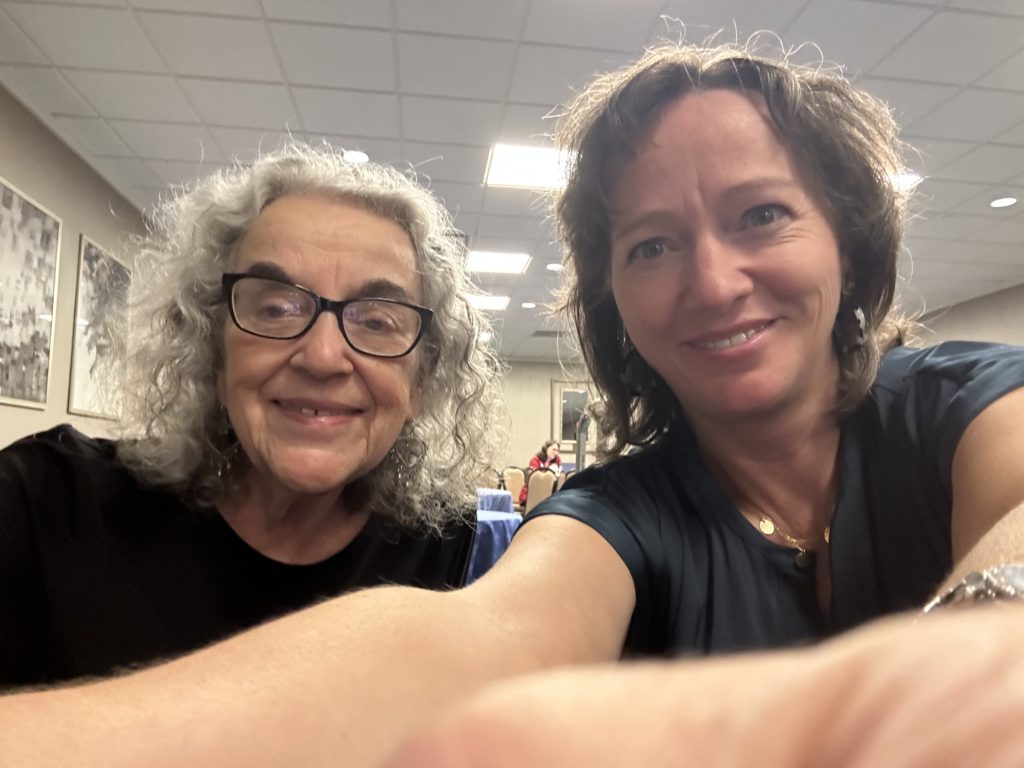
I was invited to give a breakout presentation entitled Making Words Stick and to run a thought-leader session entitled What if I Told You There Was No ‘Complex Code’? Greeted by an enthusiastic audience each time, I’m still pinching myself that I was given the honour of participating.
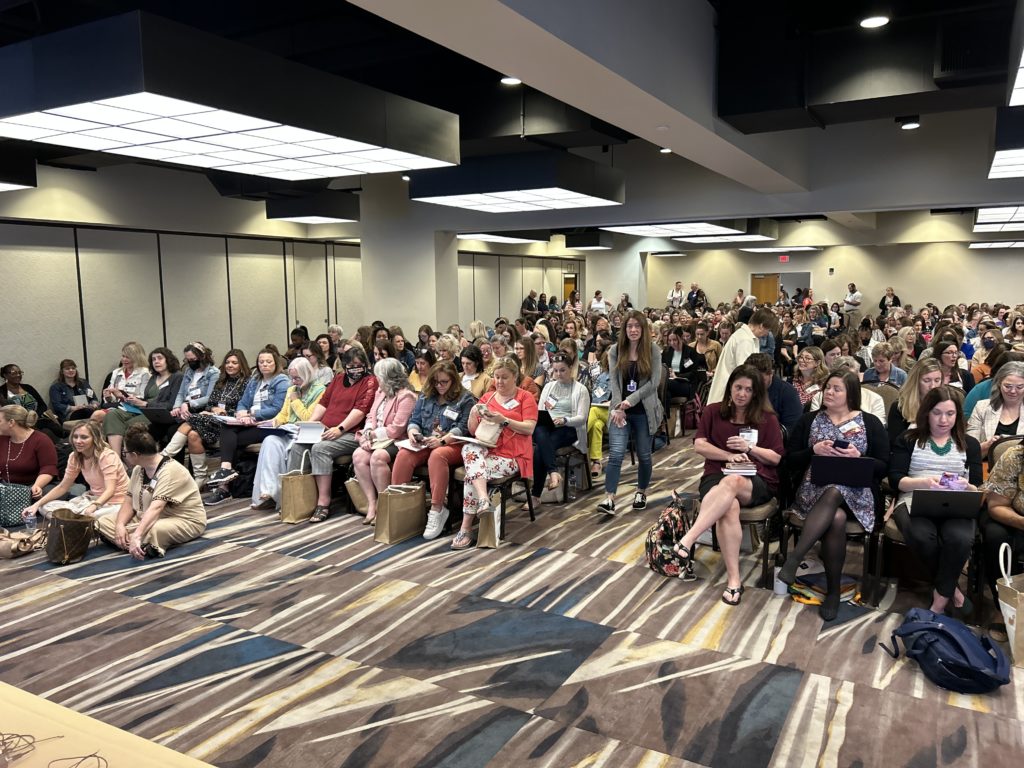
This three-day conference was opened each morning by an inspirational speaker in the Grand Ballroom. The first day’s inspiration was Hamish Brewer, also known as the “Tattooed Principal”. Hamish is an educator and motivational speaker who has gained recognition for his work as a principal in high-needs schools. He is known for his unconventional approach to education, which emphasizes the importance of building positive relationships with students, setting high expectations for them, and creating a culture of positivity and belonging in the classroom.

Brewer’s passionate and enthusiastic style, combined with his personal anecdotes, made for an entertaining talk. While I didn’t find his message to be particularly groundbreaking, I still found it valuable as a reminder of the impact that positivity and connection can have on student learning. He also emphasized the importance of understanding the impact of poverty on education, whilst making it clear that poverty should not be seen as a learning disability. He challenged educators to move beyond the traditional deficit-based approach to teaching and instead focus on the strengths and potential of each student.
Brewer’s style was definitely the reason he was asked to perform the “inspiration” part of the day. Personally, I and the other introverts sat a couple of his activities out (like dancing to Girls Just Wanna Have Fun), but we were there with you in spirit.
I attended a number of breakout sessions (although the remaining first sessions of the day eluded me) and my first was Douglas Fisher, an American educational researcher, author, and professor of educational leadership at San Diego State University. His talk was entitled “The Skill, Will and Thrill of Comprehension”.
During his session, Fisher emphasized the importance of explicitly teaching the “levels of engagement” in reading comprehension. I hadn’t heard of this before and look forward to reading more about it.
Fisher also highlighted the importance of providing students with ample opportunities to practise reading in order to develop a liking for reading and a desire to engage with texts. He contrasted this with what he called “shut up” sheets, which are worksheets that ask students to answer a series of questions about a text without any real engagement or analysis. Fisher emphasized that these types of worksheets are not effective in promoting comprehension.
Another key point that Fisher made was the importance of small group instruction. He argued that this approach can be highly effective when teachers are able to diagnose student needs and tailor instruction accordingly.
Next was the delightful Devin Kearns with “Words to the World: The Psychological Processes that Turn Ink into Ideas”. Kearns is an expert in the field of cognitive psychology and his session was particularly focused on the psychological processes that occur when we read and write.
One of Kearns’ key recommendations was to “build the most frequent connections first” when teaching literacy skills. He suggested that teachers focus on teaching generalizations about letter sequences that are true most of the time, to help students develop more efficient reading and spelling skills. Kearns also recommended teaching body-rime units, which he referred to as “phonograms,” as a way of helping students recognize common patterns in words. I can see where this would have some value, but was relieved when he moved onto his “peeling-off strategy” for morphemes, which involves breaking down words into their component parts to help students understand how they are constructed.
In my view, if a student is working at the body-rime unit level, they are are ready for morphemes.
During his session, Kearns also made a bold statement when he said “Goodman was LITERALLY completely wrong,” in reference to Kenneth Goodman’s theories on reading. Of course we know this, but it’s always good to hear it again.
Kearns discussed the importance of set for variability, also known as lexical verification or mispronunciation correction. This involves teaching students to be flexible in their pronunciation of novel words that contain ambiguous graphemes so that they can match their pronunciations to words that may already be in their oral lexicon.
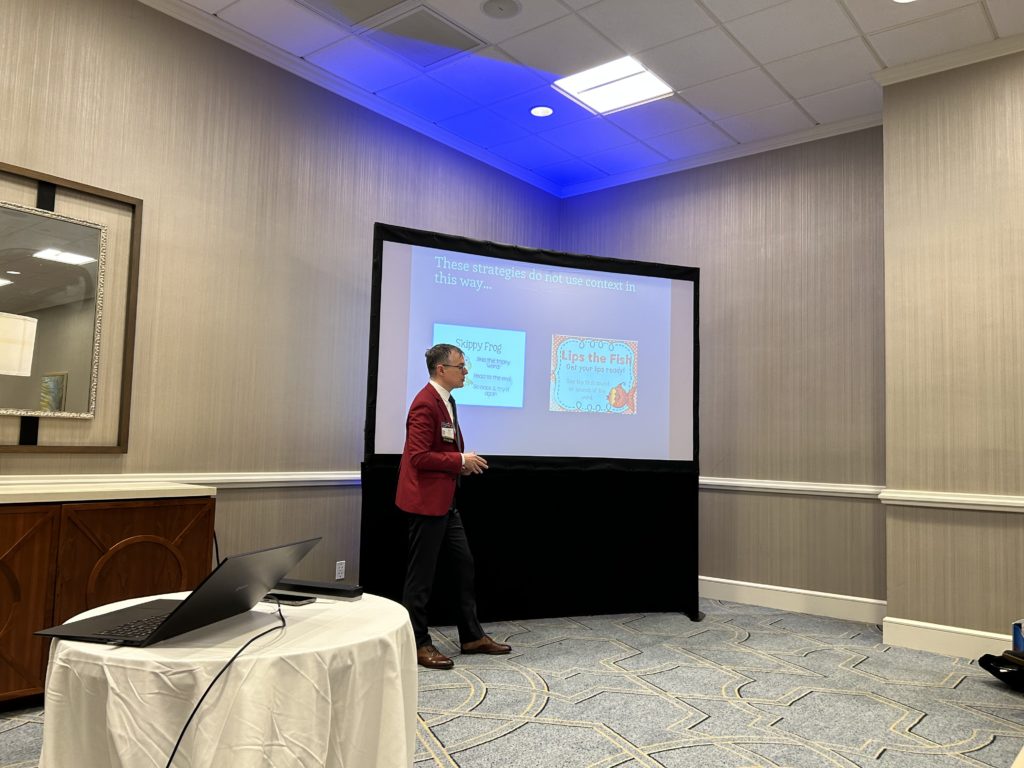
One of the most interesting points that Kearns made was his recommendation to teach reasonably familiar units to novice readers, rather than expecting them to perform mental gymnastics with a limited number of grapheme-phoneme correspondences. Kearns suggested that some teaching approaches result in nonsensical or confusing statements and words, such as “Polish off the gumdrops” or “pipkin,” and that this can be counterproductive to learning.
Finally, Kearns introduced his resource “Phinder“, which is a tool for finding common spelling patterns and body-rime units in words.
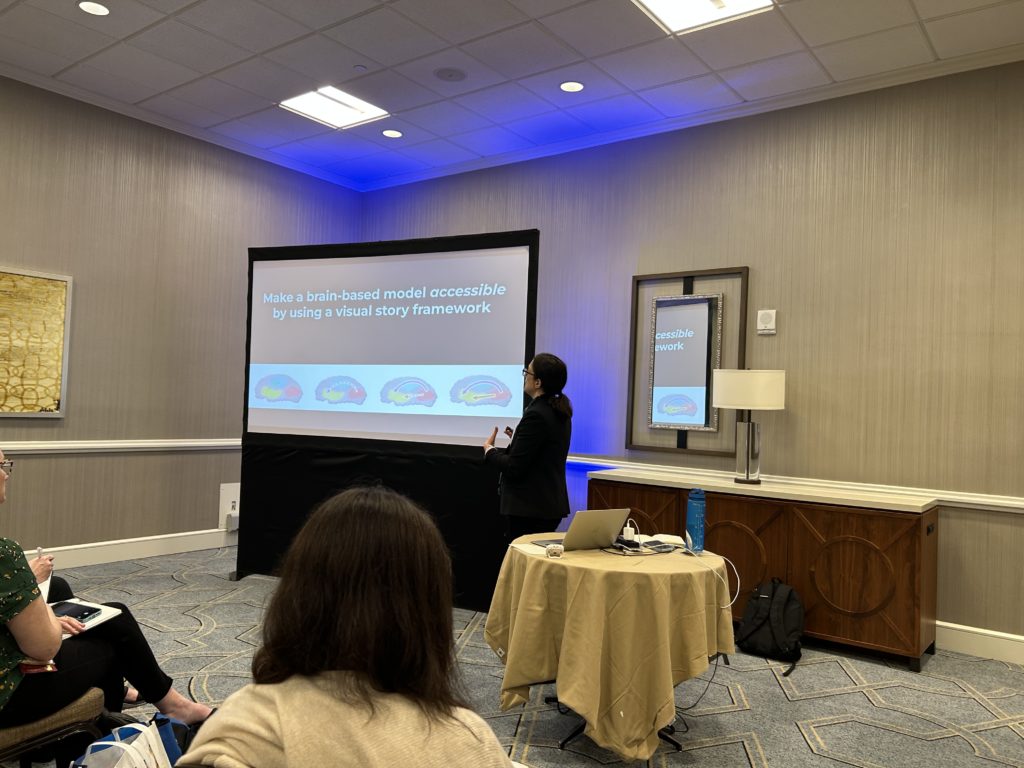
Carolyn Strom’s presentation “Beyond Topsoil Teaching: Tending to the roots of reading in the brain”, offered a unique perspective on reading instruction from a neuroscientist’s point of view. Carolyn is a cognitive neuroscientist and professor at the University of South Dakota. Her research focuses on the neural basis of visual perception, attention, and memory.
She focused on the importance of a bottom-up approach to teaching reading, and how this approach can help students develop strong foundational skills. During her session, Strom introduced the concept of the “bigram neuron”, which was a key highlight for many attendees. This neuron, which is found in the brain’s visual cortex, responds specifically to pairs of letters that commonly appear together in words, such as <th>, <ch>, and <sh>. Strom explained that the bigram neuron is important for efficient reading because it helps the brain process letter combinations quickly and accurately.
What conference would be complete without hearing from The Reading League? Heidi Beverine-Curry, their Executive Director, all round excellent tour guide and generous finder of hot dog stands, addressed the common misconception that Response to Intervention (RTI) is not effective in her “Revisiting RTI” talk.
She argued, beautifully and entertainingly, that while RTI has faced some challenges in implementation, the approach itself is sound and has been shown to be effective when implemented with fidelity.
During her session, Heidi referenced the parallels between Response to Intervention (RTI) and Multi-Tiered System of Supports (MTSS), which Dr. Pam Kastner discussed in her session.
Heidi emphasized that both RTI and MTSS involve a multi-tiered approach to student support, and both frameworks require evidence-based practices and ongoing assessment to address students’ needs effectively. She suggested that MTSS can help schools provide a more comprehensive and integrated system of support, by aligning resources, interventions, and assessments across different tiers of support.
By highlighting the parallels between RTI and MTSS, Curry’s session underscored the importance of evidence-based practices and comprehensive approaches to student support.
Heidi will be leading a Reading League Online Academy Knowledge Block – “Rethinking RTI: Where Are We Now?” in April 2023.
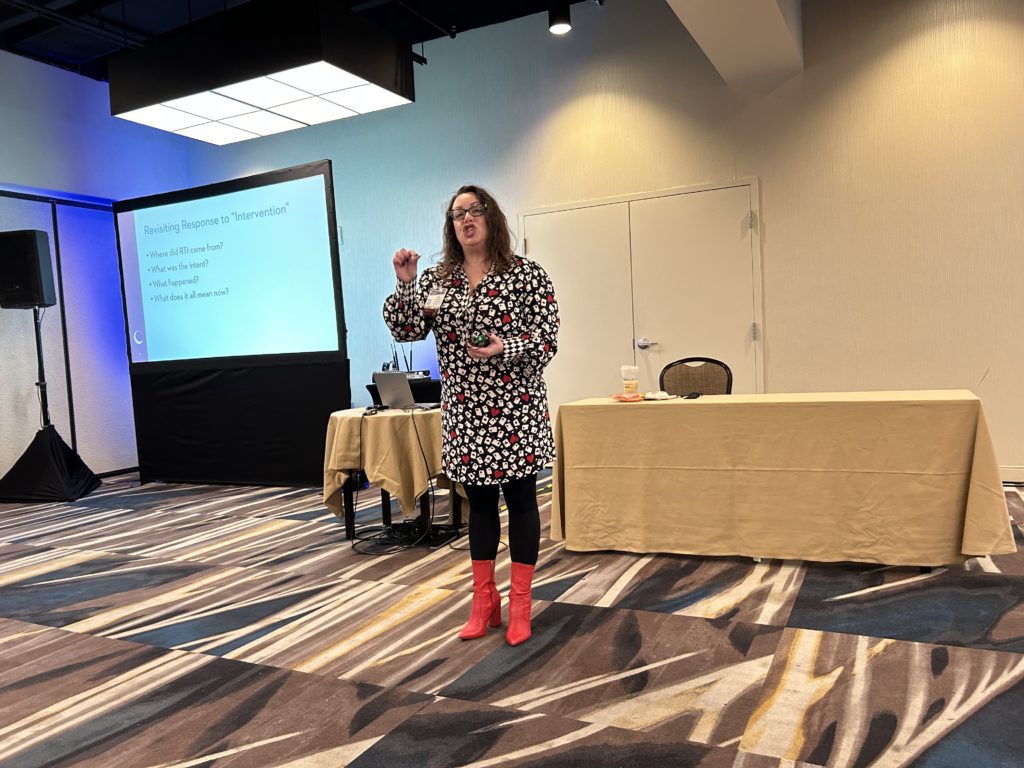


The final breakout session I attended was led by the inimitable Daniel Willingham, a cognitive psychologist and professor of psychology at the University of Virginia. Willingham is a well-known expert in the field of education and cognition, and has written extensively on topics such as reading comprehension, memory, and critical thinking.
During his session, entitled “Helping Students Overcome Distraction”, Willingham addressed some common myths about attention and distraction in the classroom. He argued that while many people blame devices and social media for a perceived diminished attention span in students (there actually isn’t one), the real issue is often a lack of specific instruction and practice in the cognitive skills that are necessary for sustained focus.
Willingham cited research by Jennifer Roberts, a professor of art history at Harvard, who found that students who were given longer periods of time to focus on a single task were more engaged and productive than those who were given shorter periods of time with breaks. This suggested that students need to develop the ability to sustain focus for extended periods of time, and that this is a skill that can be developed with practice.

What stood out to me was the notion of the difference between wanting and liking when it comes to achievement. He explained that while teachers may try to raise engagement and focus by attempting to get their students to like their teaching, it is in fact more effective to have students want certain outcomes linked to their sense of purpose or personal relevance. In so many educational models, the cart is often put before the horse, where teachers try to be ‘engaging’ or ‘entertaining’ in order to attempt to foster learning or be liked. It is rarely effective.
This then led to a wider discussion of intrinsic and extrinsic motivation and then to the concepts of distraction from within and distraction from without. A version of this talk can be found here and I myself will be revisiting it. Highly recommended.
Plain Talk has maintained its reputation as one of the world’s premier education conferences by once again providing valuable insights into evidence-based practice and the science of learning.
I got to talk to some of my very favourite educators, including Pam Kastner, Jan Hasbrouck, Denise Eide, Joan Sedita, the illustrious Holly Lane, who gave me a copy of the UFLI manual (to be written about shortly…watch this space), my conference buddy Sara Peden and many more! To be a small part of that was a career highlight.
